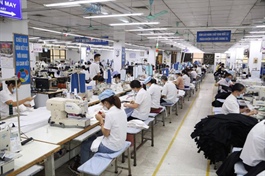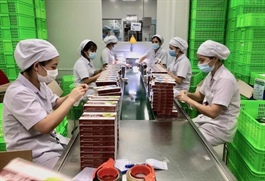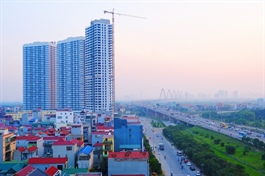IZ advances to push growth of economy
IZ advances to push growth of economy
Vietnam targets nearly doubling the area for its industrial zones by 2030, offering overseas investors the necessary land as well as attractive policy incentives to entice them to establish production bases in the country.

With German company Fuchs leasing land of two hectares in Phu My 3 Industrial Zone (PM3 IZ) in the southern province of Ba Ria-Vung Tau to build its newest factory, Vietnam further aims to become a more popular destination for industrial investors. Fuchs is the second European company to build a factory at PM3 IZ.
“Partnering with a reputable enterprise like Fuchs promises to contribute to strengthening the trust of other western companies,” said Kazama Toshio, deputy general director of PM3 IZ, last month. “Competitive prices, complete infrastructure, and modern seaports also help places like PM3 IZ in attracting many multinational tenants.”
Global foreign direct investment (FDI) inflows in 2022 are forecast to increase further, stated the General Statistics Office, and may return to the 2019 level of $1.5 trillion as nations will prioritise policies to boost sustainable recovery, and IZs will play a big role in such a recovery.
However To Lam, chairman of Golden Star, a consultancy specialising in overseas clients told VIR, “Taking advantage of opportunities when global FDI flows into Vietnam is only one side of the story. The other side is that the country needs to deal with internal problems in its policy implementation.”
A list of sectors that are “especially encouraged for further investment”, according to Lam, could be the solution to the problem of limited land and rising leasing rates.
“Such a list would help localities analyse and evaluate each field to offer appropriate incentives, ensuring increased investment attraction and more effective land usage,” Lam said.
Dr. Nguyen Dinh Cung, former director of the Central Institute for Economic Management, said that in Vietnam’s Socioeconomic Development Plan for 2021-2025, many cities and provinces continue to set the goal of attracting more foreign capital. The advantages used for this are the locations, synchronised infrastructure, and a red carpet policy for foreign investors through tax incentives, enticing land rents, and some other incentives.
“However, competition in attracting FDI causes dispersion of resources and reduces the country’s ability to attract investments,” Cung explained. “Hung Yen, Hai Duong, Haiphong, and Quang Ninh provinces all have much available space to build a series of large-scale IZs, forming a specialised zone large enough to attract sizable projects in high-tech industries. The zone can be connected through a synchronous infrastructure with highways, seaports, and airports.”
Nevertheless, international and domestic hurdles are significantly impacting Vietnam’s economic development orientation.
Assoc. Prof. Dr. Nguyen Dinh Tho, director of the Institute of Strategy and Policy on Natural Resources and Environment under the Ministry of Natural Resources and Environment, said that Vietnam must develop special preferential policies to ensure investment attraction in this special zone, as well as abide by commitments with the World Trade Organization and international trade deals.
“The development of IZs remains to be confronted with many shortcomings and lacks a unified approach on the interregional and interprovincial scales. The average investment attraction rate of a project in an IZ is relatively low, only amounting to $4.61 million per hectare of leased industrial land. Meanwhile, many projects continue to be delayed or are still in the approval process for land allocation, heavily affecting their investment efficiency,” Tho explained.
The government advocates the development of IZs as an important solution to promote the process of economic restructuring and growth model. Tho said that the arrangement of available land for new IZs is “considered as one of the long-term factors to avoid high expenses for compensation, ground clearance, and resettlements.”
By 2030, the nation’s total area for IZs is estimated to be about 206,000ha, of which about 60 per cent are meant for industrial production and 40 per cent for related infrastructure. This target equals an increase of 115,000ha compared to 2020. The plan includes a total of 558 IZs, 95 of which would be located in coastal economic zones and border gate zones.
“After the decision has been made by the National Assembly, the government will allocate quotas to localities, giving priority to them to expand the IZs if they already reached an occupancy rate of at least 60 per cent,” Tho said.
The government and people’s committees at all levels will also consider using 85,000ha for industrial clusters established by localities, according to the land-use plan by 2030. If this plan is well implemented, according to Tho, Vietnam will still retain its competitive advantage and thus improve the quality of capital.





















